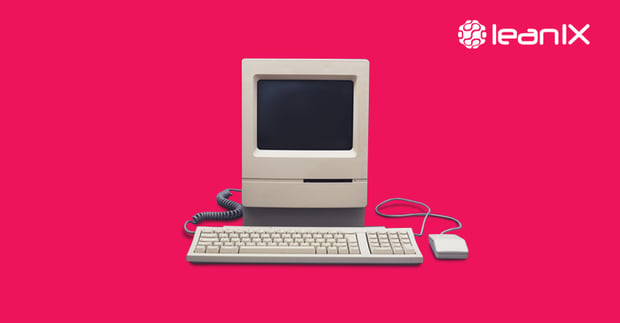
The ancient philosopher Heraclitus of Ephesus was one of the most important thinkers in history. Born in 530 BC, Heraclitus’ views on change and flow affected the future philosophies and had a significant impact on the works of many philosophers from Marcus Aurelius to Friedrich Nietzsche.
Ephesus rejected city life and moved to the mountains where he reflected on the state of the natural world. He observed that nature is in a state of constant flux. ‘Cold things grow hot; the hot cools, the wet dries, the parched moistens,’ Heraclitus noted. Everything is constantly shifting, changing, and becoming something other to what it was before. 15 centuries later, and we’re noticing the same phenomenon all around us - even in the intangible world of IT.
IT architecture is continuously in flux.
Think about the birth of a business. In its startup stage, the goals are to produce a quick MVP, find early users, distinguish your brand through marketing, and to deliver fast results. An IT architecture formed in the early stages of a visionary startup will look very different from the IT architecture that supports a large enterprise.
There is not one set architecture for every company of every size in every industry. Virtually every company has the goal of rapid growth, and the same IT architecture that supports the company in the early stages will likely not support the substantial growth.
One of the most common terms used to describe growth in a startup is 'Hockey Stick Growth.' The idea is that things like users, pageviews, or revenue starts growing at an average linear pace, and then, once an inflection point is hit, growth takes off at an exponential rate - hence the hockey stick.
When your company hits the hockey stick growth, you add record users, increase site traffic, and gain deeper knowledge into the needs of your industry and your product, processes, and systems tend to change. These changes should be reflected in the code.
Build just-on-time architecture
As rapid digitization quickens the pace of business, it is important to build code for right now. In an event that your company experiences rapid growth, take pride in rewriting the code. eBay and Google are each on their fifth entire rewrite of their architecture from top to bottom.
Think of IT architecture as lego building blocks. In the beginning, you need a suitable firm base. No bells, no whistles - just a concrete foundation to start building upon. As you progress, the next layer may call for a bit more complexity. The following year, you’ll make space for intricate features into the plan, maybe a bay window and a depression in the wall for an imaginary entertainment center. After five rounds of building, you’ll have a totally different structure; a radically different codebase that suits your current needs. Start simple - go complex.
LeanIX as an example
After five years of taking the the Enterprise Architecture Management SaaS market by storm, we came upon the motto, “You can’t build your IT architecture today with yesterday’s tools and stay in business tomorrow.” So we decided to reinvent ourselves.
The dedicated dev team at LeanIX has spent an entire year rewriting our code from top to bottom. Every line was updated, replaced, and modernized. We never once felt like we were wasting our time. It is an absolute privilege to be prompted to rewrite a system.
Features of the new code stack:
Improved Usability
We completely refurbished the User Interface as a state-of-the-art Single Page App. In particular, Pathfinder ships with a much more powerful inventory. You will enjoy a tabular view and mass data-edit, Drag & Drop hierarchical structural and Save & Share queries in your inventory.
Enhanced Functionality
Enjoy our new add-ons, such as a Flexible Data Model (for example, custom fields), Own vs. Vendor lifecycle and create lifecycles on relations.
More Technological Capabilities
Are you ready for an optimized API with much faster network load, embedded reports in 3rd party apps and an extended graph analysis? Pathfinder has it all.




